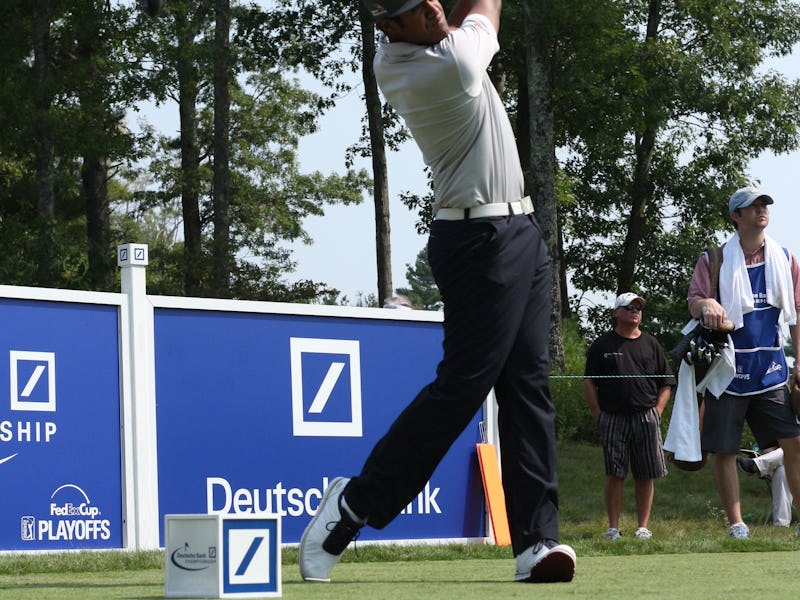On Wednesday, pro golfer Tony Finau triggered a collective cringe all over the United States cringe as he performed an unscheduled medical procedure on live television. The 28-year-old dislocated his ankle while celebrating a hole-in-one during the mostly-just-for-fun Par-Three competition leading up to the Masters, and to everyone’s shock (and the horror of doctors everywhere), he popped it back into place right then and there.
Three bones meet at the ankle, and while the whole assembly is built to rotate, it’s not meant to bend sideways like Finau’s did. Dislocation is incredibly painful, but just one day after his injury, Finau seemed to be doing mostly fine. He ended Thursday tied for second place in the tournament. “To be in this position I’m at now, [from] when I woke up [Thursday] morning, it’s nothing short of a miracle, if you ask me,” Finau told USA Today. “I could barely put any pressure on it. I could barely walk.” Impressive though it was, popping your own ankle back into place is generally not recommended.
The body’s natural inflammatory response to an injury like a dislocation means that Finau’s ankle is almost certainly swollen, stiff, and hurting badly. Dislocating your ankle hurts like heck because the pressure created by its three bones slipping out of place can tear one or more of the ligaments that keep them properly aligned. By continuing to play on his injured ankle without first checking for any torn and inflamed ligaments, he risks re-injuring it. Wrapping the ankle for support definitely helps reduce that risk, though.
One of the reasons it’s important to see a doctor after a suspected dislocation is because it may be more than bones and ligaments that are out of place —if blood vessels in the leg were also twisted in the process, blood flow to the foot and ankle might stop, note experts at St. Luke’s Hospital in Kansas City. Treatment depends on the severity of the dislocation. Really bad cases require surgery and screws to hold the bones in place; in milder cases bones can be moved back into place without surgery, which is called closed reduction.
Fortunately, an MRI on Thursday confirmed that Finau’s injury was indeed a dislocation and no bones had been broken, reports CBS Sports. But as the tournament goes on, Finau will surely test his body’s limits: a ligament injury like this one needs rest to heal properly, so his decision to play the entire gold tournament will likely delay his recovery, especially on a notoriously hilly course like Augusta.
While you certainly play on an injured ankle, most reasonable doctors would advise you not to. That being said, if you’re Tony Finau and you’re playing in The Masters for your first time ever, it’s very arguably worth the risk.
